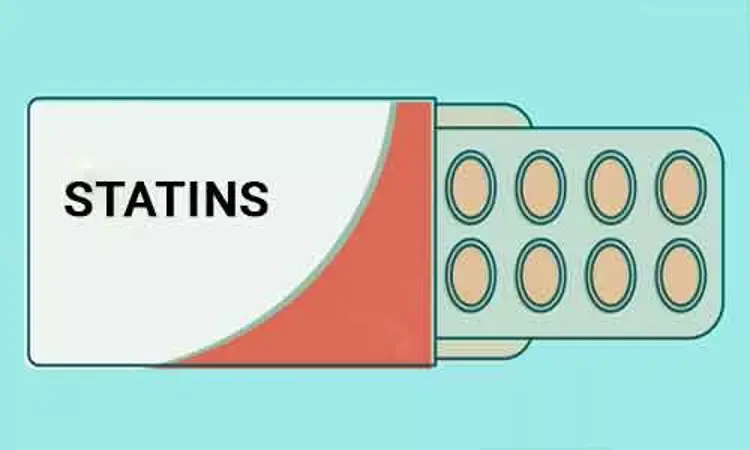- Home
- Medical news & Guidelines
- Anesthesiology
- Cardiology and CTVS
- Critical Care
- Dentistry
- Dermatology
- Diabetes and Endocrinology
- ENT
- Gastroenterology
- Medicine
- Nephrology
- Neurology
- Obstretics-Gynaecology
- Oncology
- Ophthalmology
- Orthopaedics
- Pediatrics-Neonatology
- Psychiatry
- Pulmonology
- Radiology
- Surgery
- Urology
- Laboratory Medicine
- Diet
- Nursing
- Paramedical
- Physiotherapy
- Health news
- Fact Check
- Bone Health Fact Check
- Brain Health Fact Check
- Cancer Related Fact Check
- Child Care Fact Check
- Dental and oral health fact check
- Diabetes and metabolic health fact check
- Diet and Nutrition Fact Check
- Eye and ENT Care Fact Check
- Fitness fact check
- Gut health fact check
- Heart health fact check
- Kidney health fact check
- Medical education fact check
- Men's health fact check
- Respiratory fact check
- Skin and hair care fact check
- Vaccine and Immunization fact check
- Women's health fact check
- AYUSH
- State News
- Andaman and Nicobar Islands
- Andhra Pradesh
- Arunachal Pradesh
- Assam
- Bihar
- Chandigarh
- Chattisgarh
- Dadra and Nagar Haveli
- Daman and Diu
- Delhi
- Goa
- Gujarat
- Haryana
- Himachal Pradesh
- Jammu & Kashmir
- Jharkhand
- Karnataka
- Kerala
- Ladakh
- Lakshadweep
- Madhya Pradesh
- Maharashtra
- Manipur
- Meghalaya
- Mizoram
- Nagaland
- Odisha
- Puducherry
- Punjab
- Rajasthan
- Sikkim
- Tamil Nadu
- Telangana
- Tripura
- Uttar Pradesh
- Uttrakhand
- West Bengal
- Medical Education
- Industry
Statins adherence low for Secondary Prevention in Women and People of Color

Atherosclerotic cardiovascular disease (ASCVD) is highly prevalent, affecting approximately 20 million people in the US. ASCVD includes Myocardial Infarction, angina, coronary revascularization, ischemic stroke, transient ischemic attack (TIA), or Peripheral Artery Disease (PAD).
Statin therapy is a pillar of secondary prevention for these diseases. Though statin use increased over a decade, numerous studies showed substantial rate of non adherence, under treatment and suboptimal use of statins in patients with ASCVD other than Coronary Heart Disease.
According to JAMA Network Open study by Xiaoxi Yao et al, improvements in the use, adherence, and cardiovascular outcomes over the past decade for statin therapy in patients with ASCVD were moderate.
It was a retrospective cohort study Using a large U.S. health claims database (OptumLab Data Warehouse), researchers studied over 280,000 adults who experienced a first ASCVD event (myocardial infarction, angina, coronary revascularization, ischemic stroke, transient ischemic attack, or peripheral artery disease) between 2007 and 2016. Researchers categorized the data into 3 groups cardiovascular heart disease (CHD); (2) ischemic stroke or transient ischemic attack (TIA); and (3) peripheral artery disease (PAD).
Among 284 954 patients with a new ASCVD event, 104 500 had CHD, 60 866 had ischemic stroke or TIA, and 119 588 had PAD. They were analyzed for outcomes such as use ( within 30 days of discharge from hospitalization), adherence (proportion of days covered ≥80% within the first year), cost, MACE - major adverse cardiac events (1-year cumulative risk), and intolerance (within the first year) of statins.
KEY FINDINGS OF THE STUDY :
Use of statin within 30 days of discharge increased from 50.3% in 2007 to 59.9% in 2016. And within 90 days of discharge it increased from 52.6% in 2007 to 60.3% in 2016.
Women were 20% less likely than men to receive statins, whereas Black and Latinx patients were 10% less likely to receive statin than white patients.
The use of a high-intensity statin roughly doubled from 25% in 2007 to 49.2% in 2016 which increased substantially after 2013 when the ACC/AHA guidelines were released.
Patients with stroke, TIA, or peripheral artery disease were less likely to receive statins than those with cardiovascular heart disease.
Adherence to statin therapy increased from 58.7% in 2007 to 70.5% in 2016. However, women nearly 14% and people of color such as Black, Hispanic, and Asian individuals nearly 40% were less likely to adhere to medications.
Among individuals who used statin, the proportion of patients using a generic statin increased from 42.0% in 2007 to 94.9% in 2016.
The 1-year risk of MACE (major adverse cardiac events) decreased from 8.9% in 2007 to 6.5% in 2016.
Statin use within 30 days of discharge was associated with a lower risk of MACE in the overall cohort. However,the risk of lower extremity vascular complications was consistent from 4.9% in 2007 to 4.8% in 2016.
Statin intolerance increases from 4% to 2007 to 5% in 2016. The increase was particularly evident in patients with ischemic stroke or TIA than in patients with PAD.
The author concluded that " There have been modest improvements in the use, adherence, and cardiovascular outcomes over the past decade for statin therapy in patients with ASCVD, but a substantial and persistent treatment gap exists between patients with and without CHD, between men and women".
For further information:
https://jamanetwork.com/journals/jamanetworkopen/fullarticle/2773164
Doi:10.1001/jamanetworkopen.2020.25505
Dr Kamal Kant Kohli-MBBS, DTCD- a chest specialist with more than 30 years of practice and a flair for writing clinical articles, Dr Kamal Kant Kohli joined Medical Dialogues as a Chief Editor of Medical News. Besides writing articles, as an editor, he proofreads and verifies all the medical content published on Medical Dialogues including those coming from journals, studies,medical conferences,guidelines etc. Email: drkohli@medicaldialogues.in. Contact no. 011-43720751


